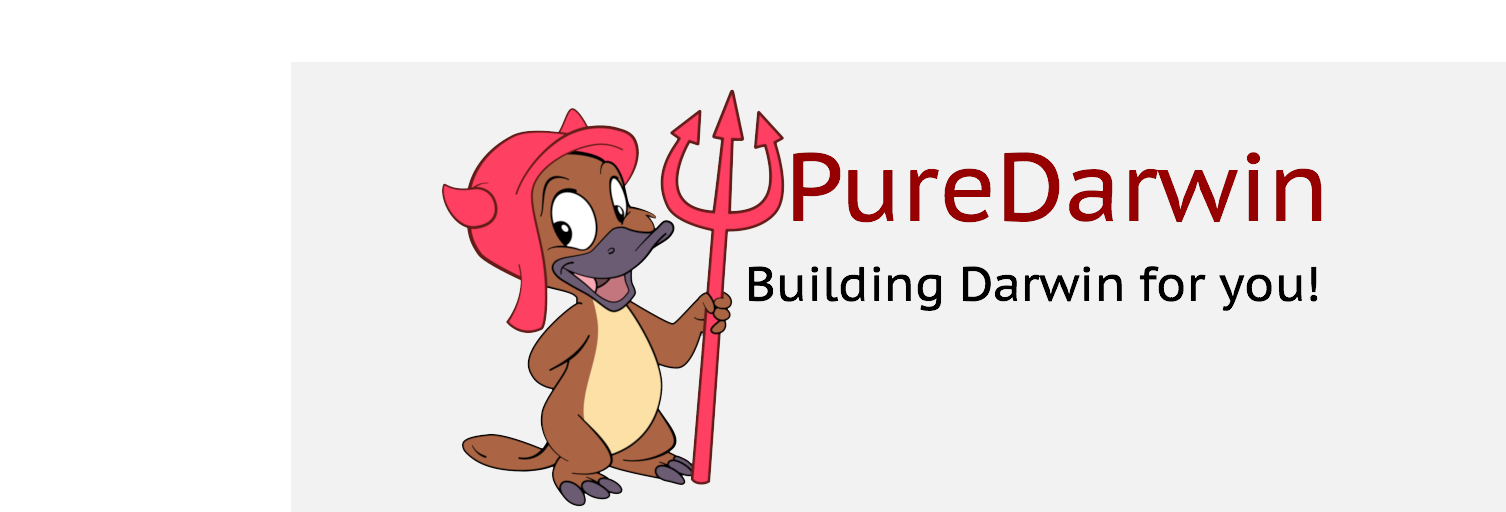

- #Darwin project wiki how to#
- #Darwin project wiki series#
Maps can reference topics or other maps, and can contain a variety of content types and metadata.ĭITA includes extensive metadata elements and attributes, both at topic level and within elements. A map can include relationship tables (reltables) that define hyperlinks between topics. It gives the topics' sequence and structure. The Troubleshooting topic describes a condition that the reader may want to correct, followed by one or more descriptions of its cause and suggested remedies.Ī DITA map is a container for topics used to transform a collection of content into a publication.In addition to identifying the term and providing a definition, this topic type might also have basic terminology information, along with any acronyms or acronym expansions that may apply to the term. A Glossary Entry topic is used for defining a single sense of a given term.A Reference topic is for topics that describe command syntax, programming instructions, and other reference material, and usually contains detailed, factual material.Concept information is more objective, containing definitions, rules, and guidelines.The steps element is a specialization of an ordered list element. The steps are contained in a taskbody element, which is a specialization of the generic body element.

#Darwin project wiki series#
It lists a series of steps that users follow to produce an intended outcome.
#Darwin project wiki how to#
A Task topic is intended for a procedure that describes how to accomplish a task. The body element contains paragraph, table, and list elements, similar to HTML. Each of these five topic types is a specialization of a generic Topic type, which contains a title element, a prolog element for metadata, and a body element. The latest version of DITA (DITA 1.3) includes five specialized topic types: Task, Concept, Reference, Glossary Entry, and Troubleshooting. Fragments of content within topics can be reused through the use of content references ( conref or conkeyref), a transclusion mechanism. Topics are the foundation for content reuse, and can be reused across multiple publications. ditaval file sample (for conditionalizing text)įeatures and limitations Content reuse  5.1 Ditamap file (table of contents) sample. Architecture: DITA is an extensible set of structures. Information Typing: which means each topic has a defined primary objective (procedure, glossary entry, troubleshooting information) and structure,. Darwin: it uses the principles of specialization and inheritance, which is in some ways analogous to the naturalist Charles Darwin's concept of evolutionary adaptation,. The name derives from the following components: It is an open standard that is defined and maintained by the OASIS DITA Technical Committee. The Darwin Information Typing Architecture ( DITA) specification defines a set of document types for authoring and organizing topic-oriented information, as well as a set of mechanisms for combining, extending, and constraining document types. Today, research by scientists from many fields, neurosciences, endocrinology, psychology, physics, thermodynamics, mathematics and anthropology have invalidated the core assumptions underlying economic models – which dominate public and private decision-making in most countries, multi-lateral agencies, including the World Bank, the IMF and the World Trade Organization.DITA Darwin Information Typing Architecture Higher levels of this hormone during pregnancy and lactation bonds women to their children, over the extended developmental period to maturity. So did cooperation and the ability to trust and bond with each other – influenced in all humans by the hormone oxytocin. "Reappraisals of the work of Charles Darwin together with new evidence from historians, archeologists and anthropologist now clearly point to the evolution of human emotional capacity for bonding, cooperation and altruism (Competition, territoriality and tribalism, rooted in the fears of our past, served humans well in our early trials and vulnerability. Suppression over 100 years of the real Darwin has led to the social, political, economic, scientific, educational, moral and spiritual mess we are in today. In the Descent of Man Charles Darwin wrote only twice of "survival of the fittest" - but 95 times about love! 92 times about moral sensitivity. = research project showing how cooperation and bonding are primary features of human survival
5.1 Ditamap file (table of contents) sample. Architecture: DITA is an extensible set of structures. Information Typing: which means each topic has a defined primary objective (procedure, glossary entry, troubleshooting information) and structure,. Darwin: it uses the principles of specialization and inheritance, which is in some ways analogous to the naturalist Charles Darwin's concept of evolutionary adaptation,. The name derives from the following components: It is an open standard that is defined and maintained by the OASIS DITA Technical Committee. The Darwin Information Typing Architecture ( DITA) specification defines a set of document types for authoring and organizing topic-oriented information, as well as a set of mechanisms for combining, extending, and constraining document types. Today, research by scientists from many fields, neurosciences, endocrinology, psychology, physics, thermodynamics, mathematics and anthropology have invalidated the core assumptions underlying economic models – which dominate public and private decision-making in most countries, multi-lateral agencies, including the World Bank, the IMF and the World Trade Organization.DITA Darwin Information Typing Architecture Higher levels of this hormone during pregnancy and lactation bonds women to their children, over the extended developmental period to maturity. So did cooperation and the ability to trust and bond with each other – influenced in all humans by the hormone oxytocin. "Reappraisals of the work of Charles Darwin together with new evidence from historians, archeologists and anthropologist now clearly point to the evolution of human emotional capacity for bonding, cooperation and altruism (Competition, territoriality and tribalism, rooted in the fears of our past, served humans well in our early trials and vulnerability. Suppression over 100 years of the real Darwin has led to the social, political, economic, scientific, educational, moral and spiritual mess we are in today. In the Descent of Man Charles Darwin wrote only twice of "survival of the fittest" - but 95 times about love! 92 times about moral sensitivity. = research project showing how cooperation and bonding are primary features of human survival







 0 kommentar(er)
0 kommentar(er)
